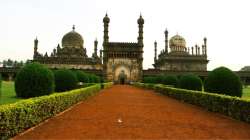If you enjoy visiting historical places, here are 5 oldest cities in the world to explore
Ancient cities possess stories of evolution and enthralling history. With the exception of invasions and natural disasters, most ancient towns have survived the test of time. Here are the world's five oldest cities that are still prospering today.

Though finding the world's "oldest" towns can be difficult because several cities may stake their claim to being the "oldest" based on various factors, including continuous habitation, archaeological evidence, or historical records. So if you enjoy visiting historical places but have trouble searching for the oldest ones, don't fret. Here we provide you with the oldest cities of the world.
The following five cities are widely known as being among the world's oldest:
Jericho, West Bank, America:
With evidence of human occupancy dating back to roughly 8,000 BCE, Jericho is home to historic structures, churches, and the Jericho Center Country Store. Jericho is a town located in Vermont's Chittenden County. Wilson "Snowflake" Bentley, an American farmer who photographed snow crystals, was born and raised in Jericho, which has gained notoriety for its iconic snow crystals.
Athens, Greece:
With a history spanning more than 3,400 years, the ancient city of Athens is one of the oldest cities in Europe. It is regarded as the origin of democracy and western philosophy. Along with other famous buildings, including the Temple of the Olympian Zeus, the city is home to the Acropolis, a UNESCO World Heritage Site.
Varanasi, India:
Also known as Benares or Kashi, this is one of the oldest continuously inhabited cities in the world, located in Uttar Pradesh in northern India. It is regarded as India's spiritual capital and draws Hindu visitors to bathe in the Ganges River's holy waters and observe burial ceremonies.
Aleppo, Syria:
Aleppo is a historical city in Syria that has been inhabited continuously for over 8,000 years, with archaeological evidence of its settlement dating back to the sixth millennium BCE. It was ruled by the Hittites, Assyrians, Arabs, Mongols, Mameluke, and Ottomans and was situated at the intersection of several trade routes beginning in the second millennium B.C.
Byblos, Lebanon:
Also known as Jubayl, it is one of the oldest continuously inhabited towns in the world, believed to have been inhabited for the first time between 8800 and 7000 BC and continuously since 5000 BC. It is believed to be the source of our modern alphabet, as evidenced by the oldest Phoenician inscription, which was engraved on the sarcophagus of Ahiram.